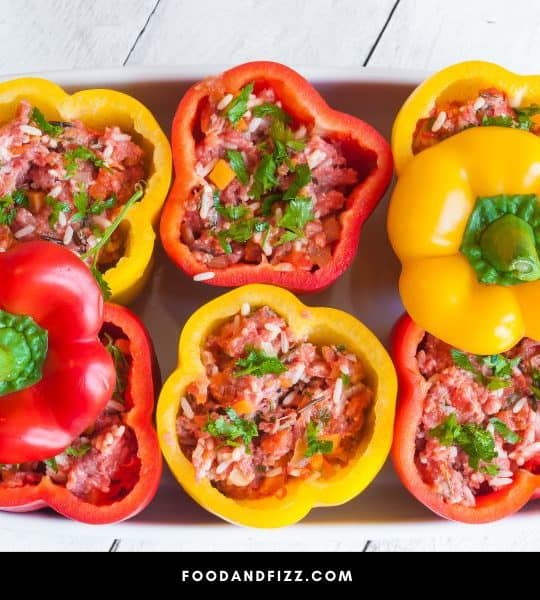Fillings and stuffings add that element of surprise and an extra layer of texture and flavor that elevates the wow factor of the dish. Looking at the terms, they seem to mean the same thing. But is there a difference between them?
Fillings and Stuffings – what’s the difference?
Fillings vs Stuffings – What’s the Difference?
Fillings and stuffings are both mixtures of ingredients that are placed inside food to enhance its flavor, texture, and color. Stuffing normally pertains to ingredients that are placed inside the cavity of an animal or vegetable, as in stuffed turkey or stuffed peppers, usually prior to cooking. Fillings refer to ingredients that go inside any type of food and usually involve the process of wrapping or rolling food. In baking, fillings also pertain to the mixture of ingredients added between cake layers, and inside chocolate, pastries, and pies.

Fillings vs Stuffings – What’s the Difference?
Fillings and Stuffings both refer to a mixture of ingredients placed inside food to add flavor, texture, and color to a particular dish.
Sweet and savory stuffed and filled foods are around us all the time, and some type of version can pretty much be found in all types of cuisines. It has become an important element and technique in cooking and has elevated the quality of a lot of our dishes.
The term “Stuffing” is more often seen in savory applications, while the term “Filling” is more often associated with sweet desserts, but depending on the recipe, you may find that both terms are used interchangeably. It just depends on the term used by the specific recipe writer.
For example, you may see “Cheese-Stuffed Pancakes” or “Nutella-Stuffed Cookies” the way you would see stuffed chicken or stuffed turkey.
But you may also see “Meat and Cheese-filled Ravioli” or “Herb-filled Potato Croquettes” the way you would see custard-filled donuts or eclairs.
They would mean the same thing but ultimately the usage just depends on the vernacular or the particular context in which it was written.
In any case, both stuffing and filling pertain to things added inside food to make it even more interesting.
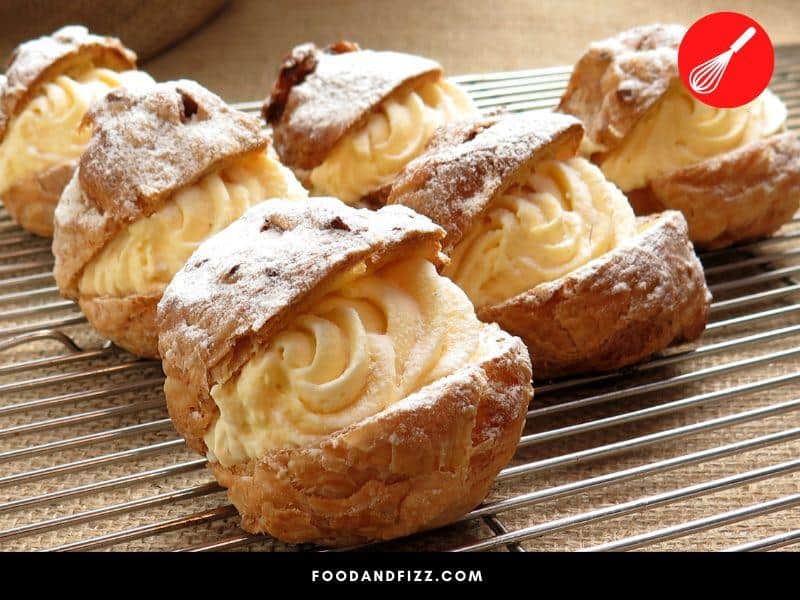
What is Stuffing?
Stuffing is defined as a mixture of ingredients that are used to fill a cavity, usually of an animal but may be applied to certain things like fruits and vegetables too.
This mixture of ingredients is usually comprised of starches, herbs, and other aromatic ingredients that enhance the flavor and add moisture to the food, and is usually added prior to cooking.
A popular example of a stuffed food is turkey. (Read: “Turkey Is Done Early – 10 Best Ways to Fix it“). In the U.S., depending on what area you are from, turkey stuffing may also be referred to as “dressing”.
Stuffing Vs Dressing
Technically speaking, stuffing and dressing are pretty much the same thing but differ in how they are prepared. Stuffing is literally stuffed inside the turkey and cooked there as the bird cooks, while dressing is prepared and cooked separately in a different pan.
Regardless of these technical differences though, the region where you are from determines what term is more appropriate to use.
In the US Northeast and Pacific Northwest, “stuffing” is more commonly used regardless of cooking method, while the South and Midwest areas prefer to call theirs “dressing”. In Pennsylvania, though, they call their side dish, “Filling”.
Despite the differences in term usage, whether you call it stuffing, dressing, or filling, it is no doubt that they elevate the dish to a different level and enhance the eating experience.
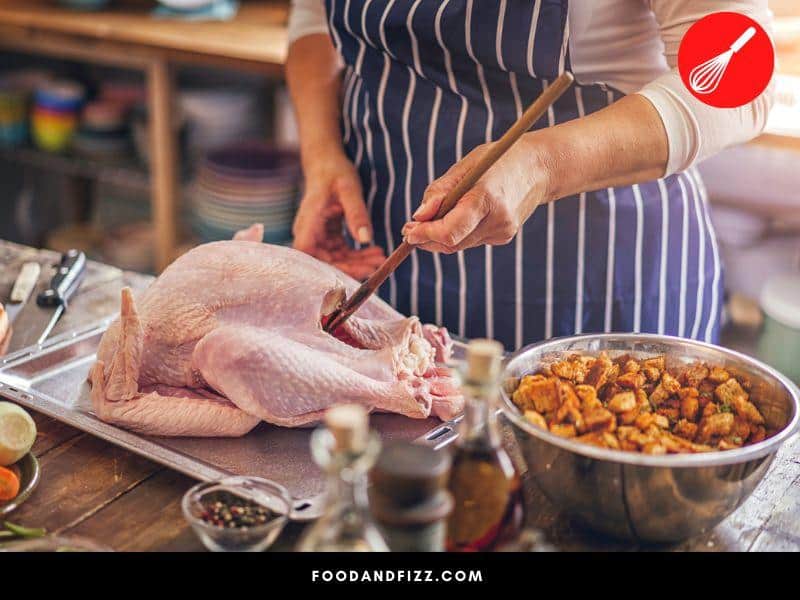
Types of Stuffing
There are different types of stuffing you can use. The most common ones are:
1. Bread Stuffing
The most common type that is used is the dried, pre-packaged, store-bought ones which would make sense for convenience and for uniform cooking.
But fresh bread, and different kinds at that, may be used as well along with a variety of different herb and flavor combinations.
2. Corn Bread Stuffing
This type of stuffing is prominent in the South and can be mixed with ingredients such as sausage, bacon, nuts, and oysters.
Some cooks agree that homemade cornbread works better than ready-made and pre-packaged ones as those can be too sweet.
3. Rice Stuffing
While less common than the bread variety, rice stuffing is another option for turkey stuffing. It can be mixed with vegetables, nuts, seeds, and dried fruit to create a unique flavor profile.
One drawback is, depending on the kind of rice, it can turn soggy and mushy when cooked inside the bird, but choosing a hardier rice variety can quickly solve that, or else opting to cook it outside the bird.
Regardless of the type of stuffing you opt for, especially if cooked inside the bird, it is imperative that when checking if your dish is cooked, the stuffing be checked too for proper doneness.
Stuffing should also register a minimum internal temperature of 165 °F on a thermometer for it to be safe to eat.
Aside from proper temperature doneness, you should also remember that stuffing is perishable, and it should be properly handled to ensure safety of your meal. “How Long Can You Keep Uncooked Stuffing in the Fridge” talks about this in detail.
What Are Fillings?
Like stuffing, fillings are a mixture of ingredients added inside food or placed between layers of food (as in cake), to impart flavor, texture, and aesthetics to a dish.
Foods with fillings can be wrapped or rolled. Examples are spring rolls or ravioli.
They can also be encased in dough, as in pies and hand pies. They can also be injected into the food item as in the case of pastries, cupcakes, or donuts, typically after baking as most of these sweet fillings are cream or fruit-based and do not require cooking.
Savory Fillings
Savory fillings can be comprised of meat, vegetables, cheese, herbs, spices, starches, and grains.
Meat-filled and cheese-filled puff pastry, pies and bread, chicken cordon bleu, burritos, tacos, as well as ravioli or cannelloni, are examples of savory foods with filling.
The possibilities are actually endless with regards to filling flavor and choice.
Sweet Fillings
Because I am a baker, the type of filling that I think of when I hear the word is often of the sweet kind. Custards, creams, chocolates, fruits, and nuts infused and sweetened with different ingredients are usually top of mind for me when I think of fillings.
Eclairs would not be eclairs without a pastry cream filling, and jelly donuts are just sweetened bread without the jam filling.
In other words, while fillings do enhance flavors in food, in a lot of cases, they aren’t optional. Fillings are what define the very nature of the dish.
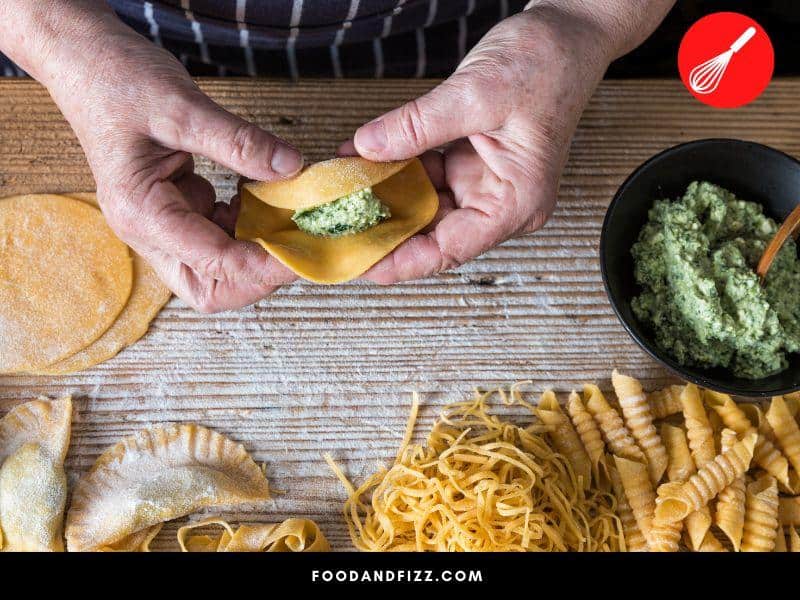
Purpose of Fillings in Baking
In sweet and baking applications, fillings do more than just add an interesting touch to baked goods. More often, fillings do serve a technical purpose too. Some of the reasons why we would add filling would be:
1. Enhance the flavor and texture
Plain cake, no matter how delicious, can be a drag to eat after a while. And bread is just dough without the added texture and flavor of a chocolate or jam filling.
The application of a fruit filling in quick breads or frosting or custard in between cake layers adds a complementing flavor and texture to the cake or bread that completes the whole eating experience.
2. Makes the baked goods aesthetically pleasing
There’s nothing more appetizing than seeing a cake that has layers of color and texture when sliced or a pie that has fresh fruit filling oozing from the flaky dough that encases it, or even pastry that oozes out chocolate or custard. Fillings just make them more visually appealing.
Eating does not begin with the mouth, but with the eyes. Visually appealing food makes the eating experience more enjoyable for us.
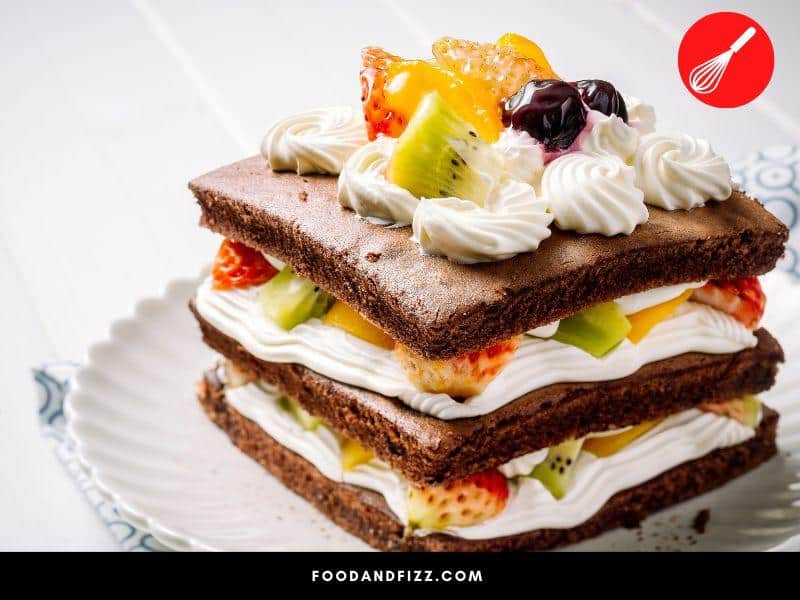
3. Adds or Seals in Moisture and helps them keep their form and structure
Cakes and muffins with fillings, especially water-based fillings, help keep them moist and prevent them from drying out too quickly.
It also helps them to keep together and maintain their structure. Macaron fillings help them to retain their form, aside from adding flavor.
Fillings, then, are important not just in terms of enhancing flavor and texture, but also serve a functional purpose.
Frequently Asked Questions to Fillings and Stuffings -What’s the Difference
What is the Difference Between Dressing and Stuffing?
Dressing and stuffing generally refer to the same thing, but stuffing is usually placed inside the turkey or the bird and cooked with it, while dressing is cooked in a separate pan. People in the Northeast or Pacific Northwest normally use the term “stuffing” regardless of cooking method, while people in the South and Midwest prefer the term “dressing”.
Can Fillings Be Both Sweet and Savory?
Fillings can either be sweet or savory but they are more commonly associated with sweet stuff. Common sweet fillings include chocolate, creams, custards, fruits and nuts, while common savory fillings include cheese, meat, vegetables, and herbs and spices.
What is Stuffing?
Stuffing is a mixture of ingredients placed inside the cavity of an animal, usually poultry, that add flavor and texture to a dish. The most popular stuffing is what is usually served with turkey.
Conclusion to Fillings and Stuffings -What’s the Difference
Stuffings and fillings are often used interchangeably, and it is true that they are similar in their purpose and their characteristics.
In the US especially, stuffing is more often associated with what you cook with turkey and poultry, although it is not necessarily limited to that as we often see stuffed vegetables and stuffed desserts too.
Fillings, on the other hand, are more associated with the sweet kind, although savory fillings do exist as well.
The way I like to think of it is, stuffing is a kind of filling (when we talk about the noun), and the action of stuffing is essentially just filling something.
What word you use just depends on what you’re used to and what the people you are talking to are used to. Using one word over the other is not likely to change your intended meaning.

